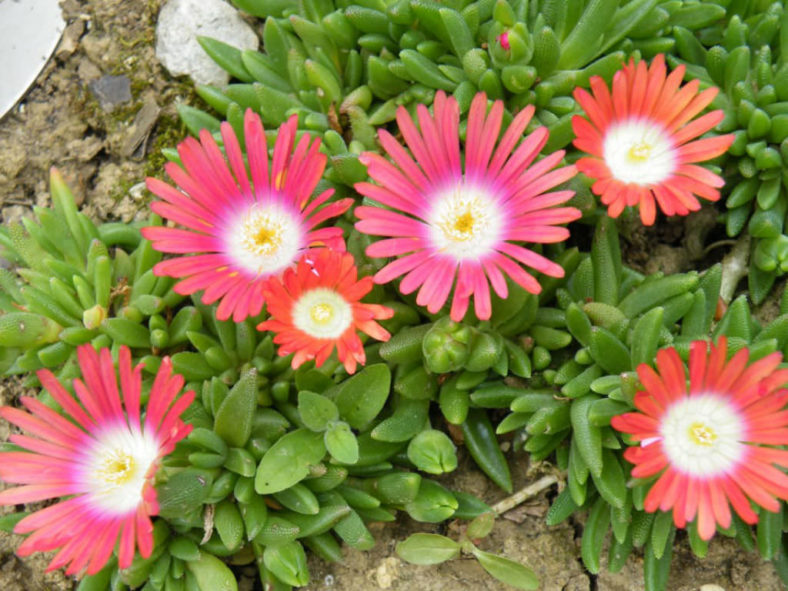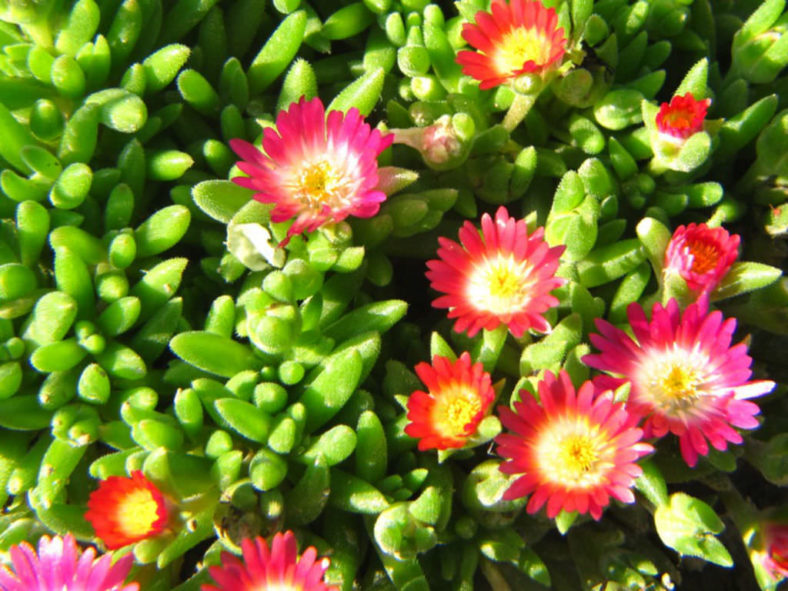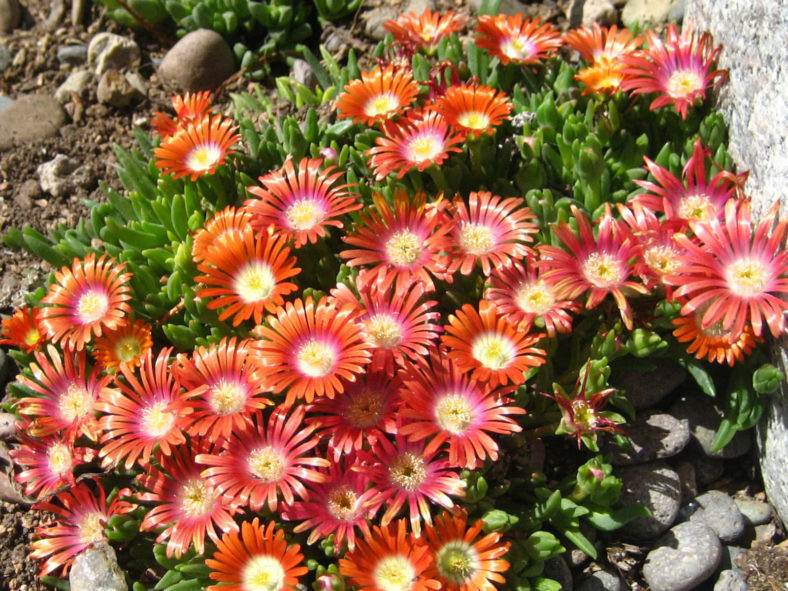Scientific Name
Delosperma dyeri L.Bolus
Common Name(s)
Dyer's Ice Plant, Ice Plant, Hardy Ice Plant
Scientific Classification
Family: Aizoaceae
Subfamily: Ruschioideae
Tribe: Ruschieae
Genus: Delosperma
Etymology
The specific epithet "dyeri" (pronounced "DY-er-eye") honors Sir William Turner Thiselton-Dyer (1843-1928), a leading British botanist and the third director of the Royal Botanic Gardens, Kew.
Origin
Delosperma dyeri is native to the mountains of South Africa (Eastern Cape).
Description
Delosperma dyeri is a low-growing succulent with compact foliage and attractive flowers. It can grow up to 3 inches (7.5 cm) tall and 15 inches (37.5 cm) wide. The leaves are thick, fleshy, and nearly cylindrical.
Throughout the summer, a profusion of daisy-like flowers with white centers appears. The flowers range from pale coppery shades to soft red to magenta and can reach a diameter of 1 inch (2.5 cm).

Hardiness
USDA hardiness zone 5a to 9b: from -20°F (-28.9°C) to 30°F (-1.1°C).
How to Grow and Care
Delospermas grow in USDA plant hardiness zones 5 to 9 and bloom for most of the summer and fall. Their foliage is mostly evergreen, making them a great year-round ground cover. However, while the plant is evergreen, it often has some dieback of foliage in the winter.
These plants prefer full sun but can tolerate light shade in the garden. Because they are succulents, they do not tolerate wet conditions but do well in poor soils. Wet soil, especially in winter, is likely to kill the plants. However, this plant can become invasive in areas where the soil stays consistently dry, so it is best to consider this when planting it.
Delosperma can be propagated by division, cuttings, or seeds. If propagating by division, spring is the best time to divide the plants. Cuttings can be taken anytime in the spring, summer, or fall. When grown by seeds, scatter them on the soil's surface and do not cover them, as they need light to germinate.
See more at How to Grow and Care for Delosperma.
Links
- Back to genus Delosperma
- Succupedia: Browse succulents by Scientific Name, Common Name, Genus, Family, USDA Hardiness Zone, Origin, or cacti by Genus
Photo Gallery
Click on a photo to see a larger version.


